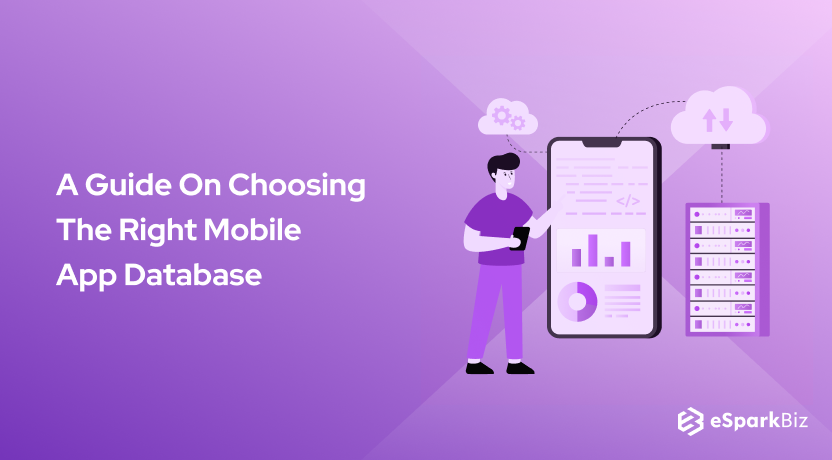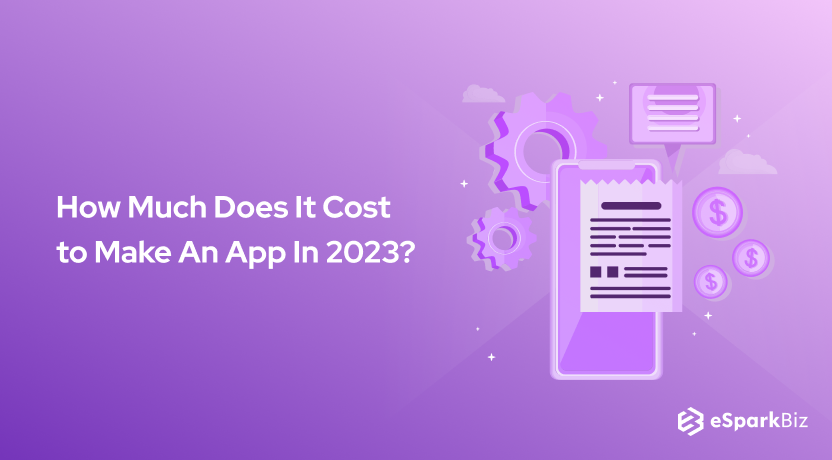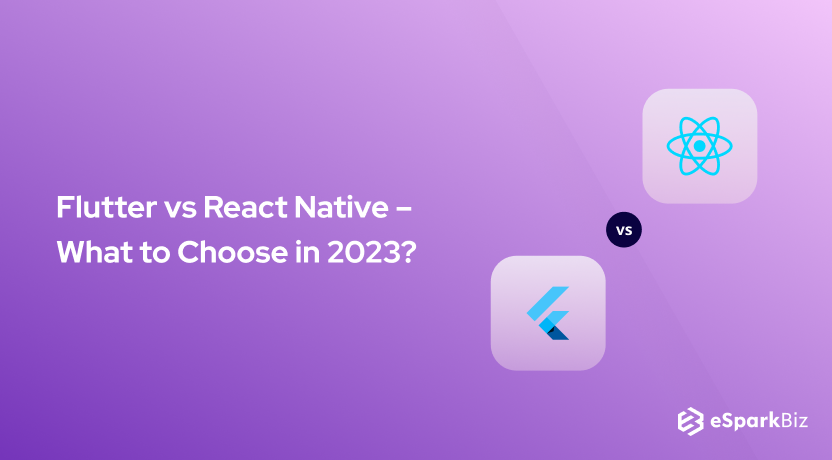Heard about the term database? You probably might have. They are spaces where you can store all of the information to retrieve and manage it at any point in time. Today, we’re going to talk and explore about the Mobile App Database.
Database has gained great importance in recent times, as every human action involves some data and therefore it is required to manage and store these data.
Mobile Apps are being used on large scale and so do its demand is increasing with greater pace, so to cope-up and fulfill the demand, hire offshore development team to build potent mobile app solutions for you and accordingly they can help you with choosing the best database to support the mobile app.
Data is stored in an organized way so that it would be easy to identify and manage. It can also help you to get rid of the Security Issues That App Developer Face.
Data is usually stored in the form of tables and fields. Queries are fired on it to manage or manipulate the data. The database is one of the key aspects of Mobile App Development.
Now, why should a database be used? There are several advantages that it offers.
Some of them are:
- Increased consistency
- A decrease in errors
- Improved accessibility to data
- Reduced data management costs
- High data security
Choosing Best Database For Mobile Apps
Before we begin with this section, here’s a general fact. Not all things are unique and one of a kind. Most of the things around us have types, be it food or games.
Speaking from a software-oriented perspective, the data that we use has types like integer, character, and string too.
Similarly, a database has types too. Yes, that’s right! It’s an interesting concept to learn about, isn’t it? Any Pro mobile app development firm can assist you to know this thing in detail.
So without any further ado, I would like to introduce you to the types of databases that companies do consider as their potential option as a Mobile App Database.
If you are interested in anything related to software development or the working computer programs and applications in general, then I think you might be familiar with some of the database types at least.
Even if you aren’t, there’s no harm. You would get an idea about them once you are done reading this section. Apps Database are categorized into 11 different types. They are as follows:
Centralized Database

Where do you store or backup files or the data that you have been working with? Do you store it on your computer itself? Now, what would happen if somehow that data is lost? That’d be a devastating thing right.
Centralized databases are stored, located, and maintained in a single location on a central computer. Using a centralized database can be your aid in such situations. Doing so would ensure that your data is accessible from any location across the globe.
Distributed Database

You can say that its functionality is the converse of what a centralized database offers. The data stored in a Distributed Database system is a sum of what the common database has, along with the information that each device stores.
You can say that several portions of the data or databases are stored in multiple different locations. Using this type of database for your application can have its advantages and disadvantages.
Personal Database

When you store your files or data on the computer that you use at home or your workplace, then that accounts for your personal database. Managing and storing data in this type of database is quite easy and doesn’t require any extra steps.
Privileged access is granted to such computers in an organization and only the people who are authorized can access the data stored on it.
End-user Database
You must have shopped online or must have come across a similar website that asks for your personal information to create your account or profile in their system.
Now, the products or goods that you get to view and shop on these websites have nothing to do with your personal information.
The aim behind storing your information is to provide you with more personalized results, depending upon your past transactions or your likes/dislikes.
In such an Apps Database, the job that is carried out at the back isn’t displayed to the End-user Database.
Commercial Database
If you are a part of an organization that keeps track of their employee’s data, then you might be well aware of Commercial Database.
Third-party organizations make use of paid database versions so that they can access certain information.
They aren’t given access to the entire database if that’s what you are wondering. They can only gain access to data under a particular subject, nothing more than that.
NoSQL Database

All the other types of databases that I have mentioned before or that I am about to address further, store data in the form of tables and columns. But NoSQL is a differently functioning system altogether.
If not tabular, then in what form does it store data? The system offers a flexible schema which implies that you can store data of all shapes and sizes. Isn’t that a great thing? You should try using it someday!
Operational Database
Every organization has its way of functioning. You cannot compare the services and the working structure of one to the other.
Accordingly, the operations of each organization are different and so are the databases used for storing that information.
To name a few, an organization uses various types of databases to store information about their marketing strategies, services that they offer to their customers, their relationship with their employees, etc.
Relational Database

Establishing relationships between two or more entities is what most organizations do. That is what makes the data relational. Storing such data can make it easier for you to manage, locate, and carry out operations.
Did you know that most organizations use SQL to carry out their operations when it comes to Relational Database? Yes, that’s right. Tables consisting of rows and columns make it easier to carry out transactions.
Cloud Database

Cloud is the most recent breakthrough that we have made. It is a space over the internet that allows you to carry out various operations and make use of the services that it has to offer.
An Apps Database of this can be very useful as it allows you to pay for the services that you use, to access your data from anywhere in the world, and offers high availability.
Aren’t those some efficient features? Do think about cloud storage if you aren’t using it already!
Object-Oriented Database
You might have heard of object-oriented programming. When you work with such languages, you need relational databases to store that information.
As we saw earlier, most of the databases focus on the operations or the actions that entities carry out. Object-Oriented Database on the other hand focuses on the objects that are created and its data.
Graph Database
If we talk about graphs in general, they are used to show relationships between two entities or which entity is dependent/ affected by any change in the other.
Graph Database also follows the same protocol and focuses on analyzing interactions between entities by making use of several graph theories.
Well aware of the types of database to choose one for your app’s database? Let’s move on to the next section then.
Now that you know about the different options that you can choose from, which database for mobile apps would you pick?
To help you conclude the same, I would like to give some examples of the already existing app databases.
Now, before you move on to deciding which database would be the best for mobile apps, you should consider a few factors. Everyone wants something that’s best for them.
You would want the same and that’s how it should be. What I mean is, you shouldn’t settle for anything less, be it in your life or while choosing a mobile database.
So, here’s a list of certain factors that I feel you should take into consideration before you settle on a worthy option for a database for mobile apps.
Data Structure
Now, when it comes to storing information in a database, what is the most important thing that you’d need? It’s data!
You need some value to carry out the storage process. Not just data, it is important for you to have data in a particular structure.
If you have a well-structured data or data in a particular format, it’d be a lot easier for you to store, manage, edit, and locate any information that you need.
Now, when it comes to your database for mobile applications, you can have different types of data to store in it.
The process can also be online or offline, depending on the requirements and development of an android application.
Size of Data
The next factor that plays a vital role in selecting the best database for mobile apps is the size of the data that you’d be storing in it. Databases sure do offer a large space to store all of your data but there are certain limitations too.
You cannot store data above a certain volume. The type and structure of your data will play an important role to decide the maximum storage that it can accommodate. Also, note that each type of database offers a different capacity to store information.
So, the initial step would be to decide the type of data and calculate the approx. space that you’ll need. Then choose an option depending on the results that you get.
Speed & Scalability
For instance, take into consideration that you have made a request to your database or that you have carried out a transaction on your database.
Would you want to wait for a certain amount of time before getting the results or would you like to get those results in the least amount of time?
Of course, you’d want to get the results as soon as possible. You will be able to make your system or the mobile database more time-efficient by using a faster processing database.
The time that you save in acquiring data from the database can be used in some other features or to improve the efficiency of the android database application.
Data Modeling

It is not that difficult, you know? You just have to come up with a strategy for techniques that you’d like to use to model your data.
Doing so can help you to represent and store information in the database in a much more efficient way.
Security
Aside from the storage capacity, it is most important that the information stored in your mobile database is secure.
You wouldn’t want your data to be lost over the transaction now, would you? The same can be avoided if you use authorization at different levels.
Multiple Platform Support
Have you ever worked with two different platforms? Ever had to figure out which command should be used to get the desired result? Ideally, different platforms have different requirements.
What if I say that you can use the same database for applications from two different platforms? Yes, you heard that right. You can do that for certain types of databases. It would help to save and manage your time.
Partition Requirement
If you have partitions or divisions in your database, then they need to be in sync with each other.
It shouldn’t happen that you update a value in one section of the database but it stays the same in another section that it is linked to.
You should make sure that you are aware of the partition requirement your chosen mobile database would need.
SQL vs NoSQL Database
As mentioned earlier, both types of databases are available for you to choose from; the ones that support SQL format and the ones that don’t.
Choosing one of them depends on you and the specific requirements that would best suit one of the formats.
Both of these formats have advantages and disadvantages of their own. Ideally, you choose your options before choosing one.
Choosing a Mobile Database: Use Cases
Based on the app databases and the methodologies that have been used by them so far, you can categorize the process of having to choose a database.
These methods, which I have mentioned as use cases, can help you to understand how database mobile applications are implemented.
Data Synchronization
As I said before, the data needs to be in sync with the latest updates that you make. Similarly, you must ensure that this synchronization is maintained between the local server and the backend server for the mobile database apps.
Multiple Data Layers
This factor is seen when the tables and fields of one application are dependent on the other set of tables and fields. Having to manage multiple aspects and layers at the same time is difficult as compared to a single-layered model.
Low Network Issue
Internet connectivity plays an important role when it comes to linking the front end of android database applications to their respective servers.
If the connection is lost in between a session, then the chances of data being stored in the database are comparatively less.
Highly Scalable Application
When scalability of any database for mobile apps is brought up, it refers to the amount of work that database can handle.
An increase in work directly means that there would be an increase in the resources needed to complete that work.
This would increase the workload on the system and to complete and maintain the progress of such tasks, it is necessary to ensure that a distributed design for the system is being approached.
New Update & Database Changes
It is necessary to ensure that your database is up to date with the version of the mobile app that you are using. The local database should be able to identify and update to the latest version.
Resolving Data Conflicts
If you have the same app or the same data on multiple devices, then some kind of conflict may be encountered during transactions. The database that you choose for your system should be able to handle such situations.
Bonus Tip
As a bonus, I’d like to mention some points that are important for a database. These points may or may not have been covered in the article, so please do have a look.
The compatible and the recommended type of database as per the requirements of the app has been mentioned in this table.
| Apps requirement | Compatible database | Recommended database |
|---|---|---|
| Reading and Writing | Key-value store/Document | Couch/Mongodb |
| CRUD Operations. | Document database | Couch/Mongodb |
| Supporting data | Document database | Couch/Mongodb |
| Storing Cache data | Key-value store | Membase |
| Increased Scalability | Document database | MongoDB |
| Offline Reporting | MapReduce supporting database | MongoDB/Hadoop |
| Complex transactions | Relational database | MySQL/VoltDB |
| Social Network applications | Graph database | Riak |
| In-built search feature | NoSQL graph database | Riak |
Best Practices for Working With App Databases
On a general basis, people carry out some practices to ensure that the application and the database in question work efficiently.
You can try to implement one or more of these practices to your mobile database apps.
Predictive Caching
As you might be familiar, caching is the process to store temporary copies of files that are on the device itself. These copies are easier to retrieve from the temporary storage than from the disks.
By using predictive caching in your mobile database apps, you can be sure of the improvement in the performance of the application and the database.
Choosing a database that uses the MVCC method
MVCC or Multi-Version Concurrency Control method allows you to view the data before the user makes any changes.
One can use it for providing multiple accesses at the same time without blocking any of the threads. You can say that it offers to carry out read and write operations parallelly.
| Database | MVCC |
|---|---|
| ArangoDB | NO |
| Firebird | YES |
| InformixDB | YES |
| MariaDB | Partially |
| MemBase | YES |
| MongoDB | YES |
| MySQL | Partially |
| PostgreSQL | YES, but not efficient |
| Realm | YES |
| RethinkDB | YES |
Low Latency Challenges
Latency is the amount of time taken between a command and its result. The lower the latency, the higher would be the efficiency. For your real-time application, you need to have low latency rates.
You can reduce latency by replicating the database. For example, MongoDB, RethinkDB, PostgreSQL are some of the databases that have a low latency rate.
Caching databases
Usually, a caching layer is added so that you can reduce the load on the servers. You can also use it to prevent the recurring data request. You can ensure performance efficiency by reducing the number of requests made to the server.
Most Popular Mobile App Databases
Even though there are many options that you can choose from, as per the statistics there would always be one option that is preferred or used more than the others.
It all depends on the services that are offered and on their relationship with the user. So, here’s a list of some of the popular databases that are used in android database applications.
A little gist about each of them has been provided.
MicrosoftSQLServer
It is a database system that helps to manage information. Microsoft SQL Server was first launched in the year 1989 by Microsoft.
It is written in the C and C++ language and is available for Windows and Linux operating systems.
PostgreSQL
It is another DBMS that was first released in 1996. It is written in C language and is developed by the PostgreSQL Global Development Group.
Hive
Hive is Apache software used for data warehousing. It is written in Java and was initially released in 2010.
MySQL
First released on 23rd May 1995, it is a relational database management system. It is open-source software that is written in C or C++ language.
Microsoft Azure SQL
Microsoft Azure SQL developed by Microsoft as well, it is a cloud database that runs on cloud platforms.
Redis
Developed and first released by Redis Labs in the year 2009, it is an in-memory distributed database that allows you to implement a project.
Teradata
It is a database service provider. The Teradata Corporation was formed in the year 1979 and is known to offer software-related services.
Elasticsearch
Written in Java, Elasticsearch is a library that is based on the search engine. It was first released in the year 2010.
Microsoft Access
Microsoft Access is another venture from Microsoft that offers a combination of relational Microsoft Jet Database Engine and a graphical UI with software-development tools.
SQLite
SQLite is another C library-oriented relational database system. It was initially released in the year 2000 and was developed by D. Richard Hipp.
Cassandra
Also known as Apache Cassandra, it is a free NoSQL database management system developed by Apache Software Foundation. It is written in Java and was first released in the year 2008.
Splunk
Developed by Splunk Inc., which was founded in the year 2003, it is an advanced database technology that uses indexing to search and locate the stored log files.
Oracle
It is a multi-model DBMS that is developed by the Oracle Corporation. It is written in C, C++, and Assembly language.
MongoDB
Released for the very first time in the year 2009, MongoDB is a cross-platform database that is document-oriented.
MariaDB
Written in C, C++, Bash, and Perl languages, MariaDB is commercial support for MySQL relational database system.
SAP HANA
SAP HANA is a column-oriented, in-memory relational DBMS developed by SAP SE. It is written in C++ and was first released in the year 2010.
HBase
Another venture by Apache Software Foundation under the domain of Apache Hadoop, is a distributed database written in Java.
FileMaker
FileMaker is a cross-platform database application developed by Claris International.
IBM Db2
IBM Db2 is a family of data management products developed by IBM. Initially, it was released in the year 1983 and is available for Linux, Unix-like, and Windows Operating systems.
Solr
Solr is an open-source search platform written in Java. It was released in 2004.
AmazonDynamoDB
It is a NoSQL database offered by Amazon as a part of AWS. It was released in the year 2012.
SAP Adaptive Server
Also known as a Sybase SQL Server, it is a relational model database written in C and C++ language. It was initially released in 1987.
Some of the other databases include Neo4j, Couchbase, ArangoDB, and Memcached.
That’s a pretty long list, isn’t it? Well, there is a high possibility that these aren’t the only databases that are used as databases for mobile apps.
Yes, that’s right! There can be more of them. As we make progress with technological development, the options to choose from for a particular task increase.
So, the option to choose either one of these databases for mobile apps is up to you.
Now, before you go forward with the brainstorming process to choose your app’s database, I would like to provide you with some criteria that can help you to make a choice.
Conclusion
A gist of all the necessary information about mobile database apps has been provided.
I hope all of this can assist any mobile app developer to figure out the best Mobile App Database and accordingly make use of it.
For any other information or facts, do surf the internet. Keep on being curious!
-
How To Connect A Mobile App To A Database?
There are some necessary steps that one needs to follow in order to connect a mobile app to a particular database. They are as follows:
Setting Up The Database Server
Configuring The Web API
Setting Up Internet Permissions For Your App
Configure The UI Of App
Pull & Parse The Data -
Can I Create My Own Database?
simple answer to this would be YES. For that purpose, you need to build your own table, forms, report, etc. and then import the data into tables.
-
What are the examples of database?
MySQL
PostgreSQL
Microsoft Access
SQL Server
FileMaker
Oracle
RDBMS
dBASE
Clipper
FoxPro








